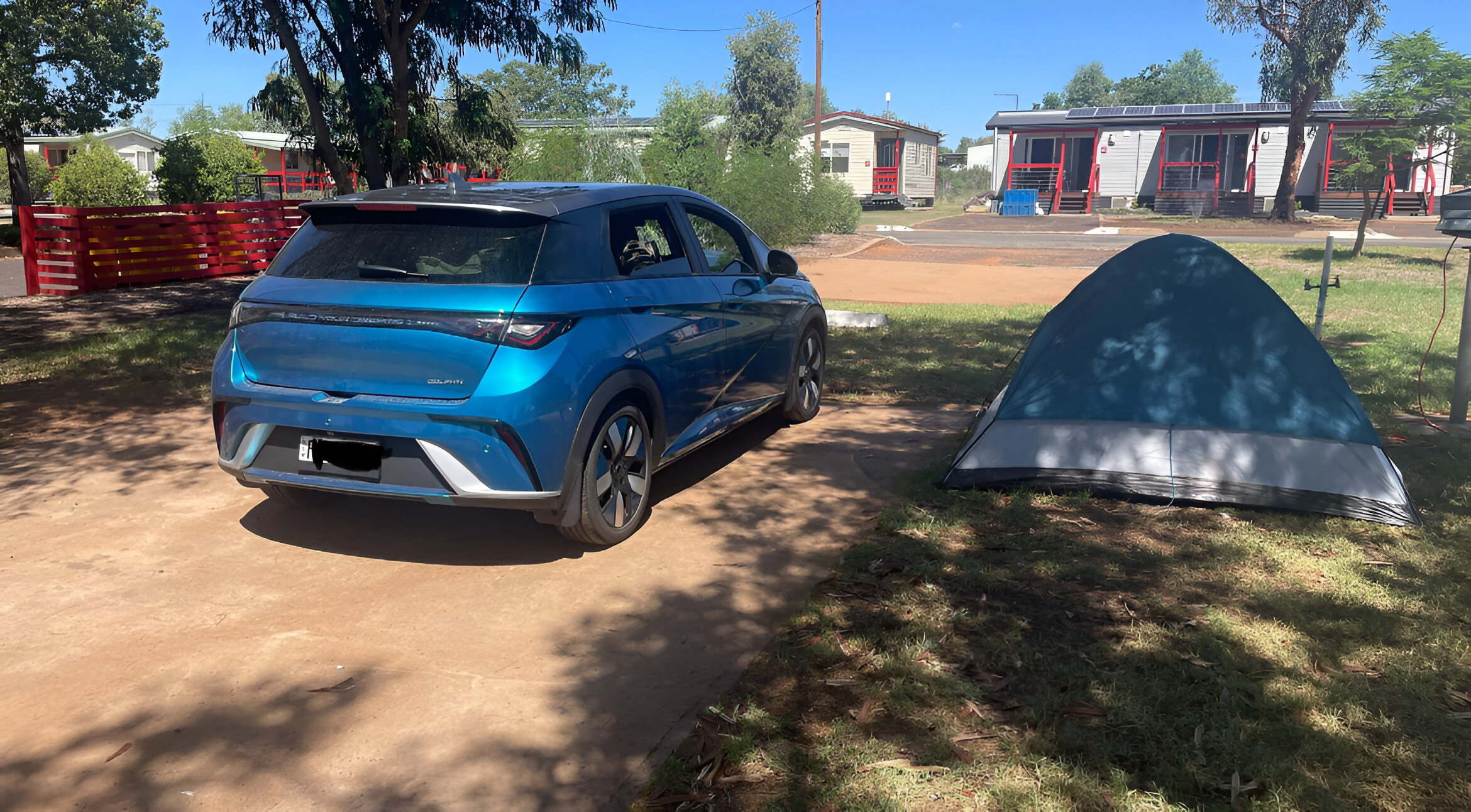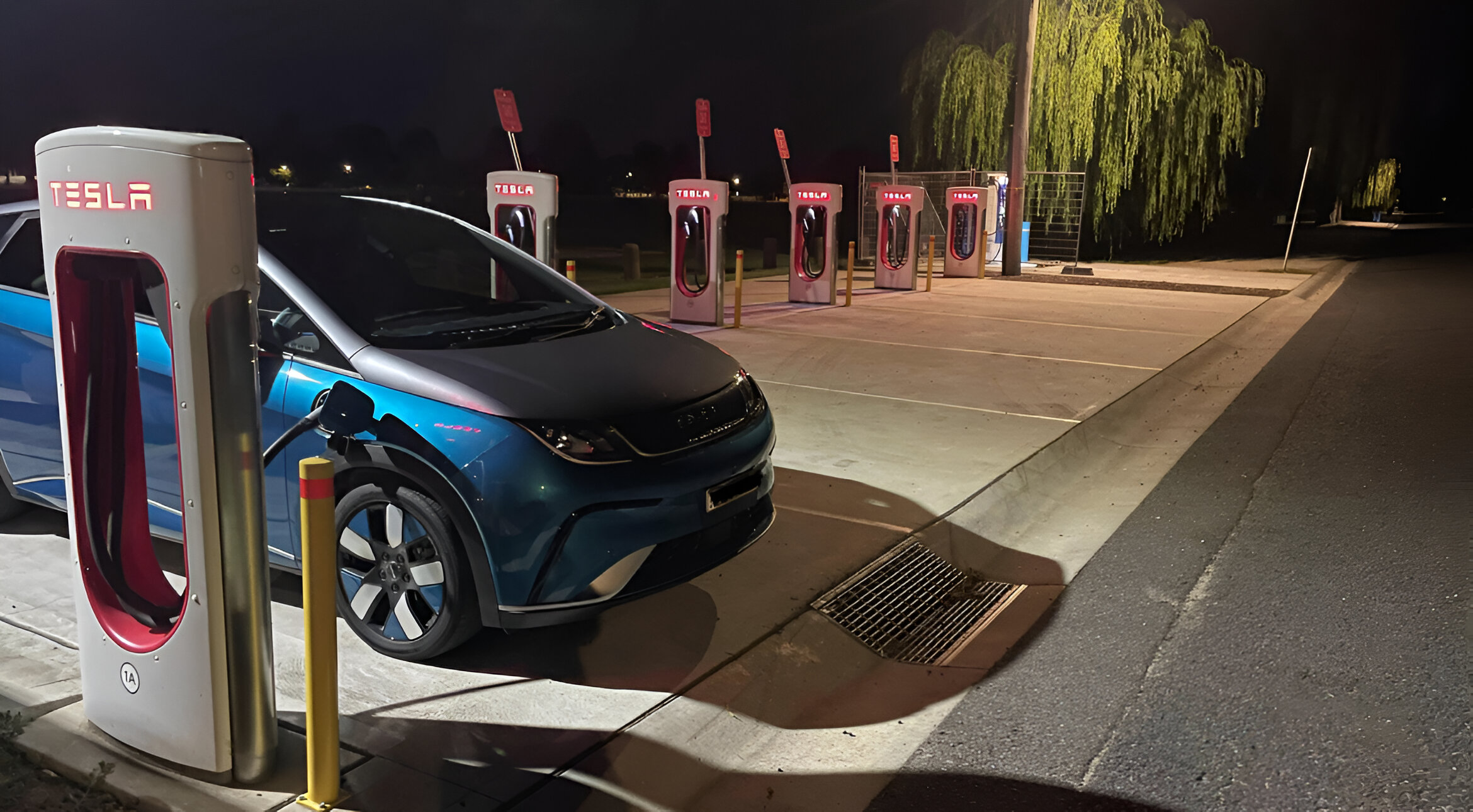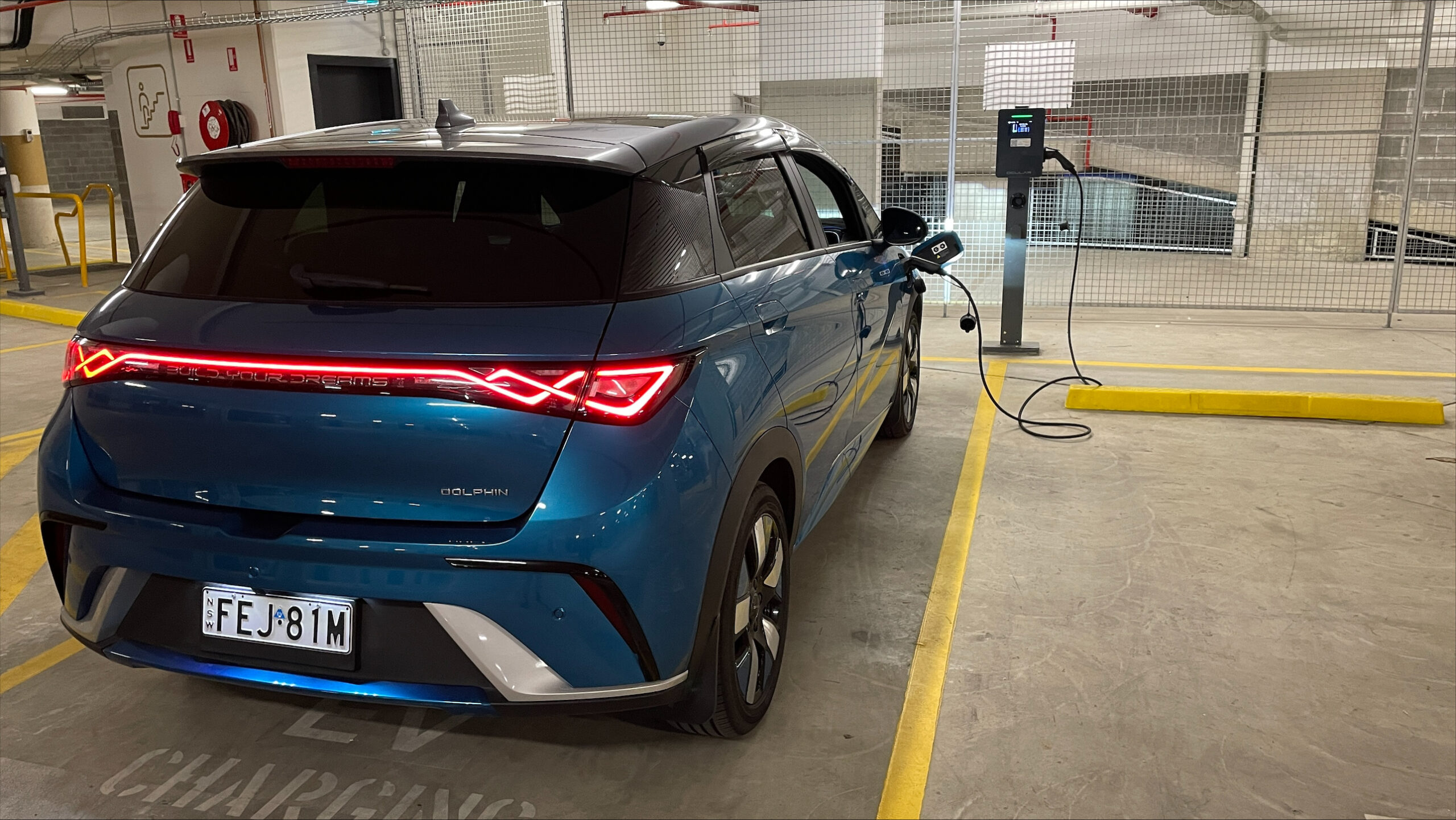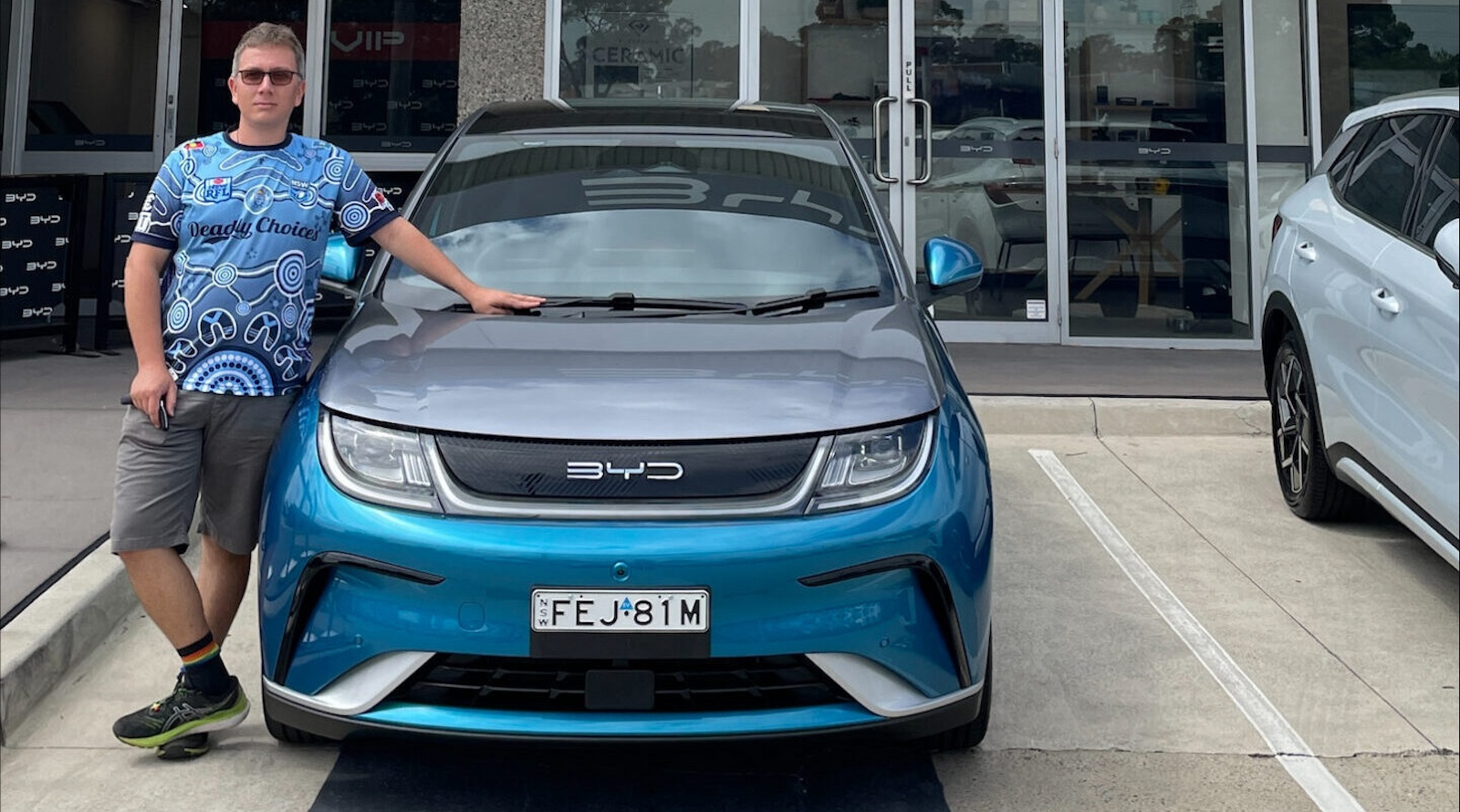Sign up for daily news updates from CleanTechnica on email. Or follow us on Google News!
By Kurt Conway, as told to David Waterworth (with any further notes from me in italics). Continuing our series of owner reviews. You can read about my own impressions of the BYD Dolphin here. Kurt tells me:
I have always been intrigued by electric vehicles ever since Nissan released the LEAF in 2011 and have always wanted one for myself since I drove a Tesla Model S P90D back in 2015 (that car was scary quick). I also love small hatchbacks for their practicality and their ability to fit in the smallest of parking spaces, but there was no EV on the market that suited my needs.
Come mid-November 2023, my last car, a petrol 2016 Kia Rio was nearly 8 years old, well north of 100,000 km, and was starting to fail terribly — a dodgy fuel pump left me stranded in Broken Hill, a blown radiator the week before, and suspension that was starting to squeak.
I asked Kurt what the costs were and he told me that the fuel pump cost AU$900 including the towing, and the radiator was over AU$700. The suspension? Who knows? He expected that it would be around AU$1000 based on his past experience with other cars. He got rid of it before the suspension failed though.
As I said, I’ve always had a keen interest in EVs and decided that I did not want another petrol car, as I was getting sick of paying upwards of AU$2.30 a litre and well over AU$100 per week for fuel.
My requirements for a new car were that it be a full BEV, have a minimum range of 400 km per charge (as I do a lot of kilometers), have an LFP battery, and be a hatchback. I do a lot of kilometers not only to commute to my job as a nurse, but also because I have friends/relatives throughout Australia and because I love exploring this beautiful country.
So, in November of last year, I put a deposit on a BYD Dolphin Premium (a car that I’ve been keenly interested in since its 2022 release in China and positive review on the Fully Charged Show). After my state government incentive of $3,000 and free stamp duty (saving another $1,400), the Dolphin cost me $43,200 to drive away. My Rio was a comparative bargain at $13,900 to drive away when I bought it in 2016.
Why the Dolphin, I asked.
To be honest, the environmental benefits of going electric, such as reduced emissions and reliance on foreign/imported oil, are immense, but it didn’t factor into my choice to purchase an electric vehicle. The main reasons that I chose to go electric were: significantly reduced running costs and vastly superior performance compared to the ICE equivalents to the BYD Dolphin.
When I initially saw the Dolphin online, I thought, “Finally, an EV that ticks all of my needs in a new car,” with the bonus that it didn’t have a plain Jane black/grey interior, but rather a funky (but not over the top) design that was colour matched with the exterior paint job.
After a placing a deposit on the car, I went to a BYD showroom near me in Western Sydney, New South Wales, for a test-drive. I was amazed at the car’s fit and finish, how nice it was to drive, and the power that it had for a small car, so I finalised the order and picked the car up two weeks later in mid-December 2023. BYD quotes the Dolphin Premium (the model I chose) as having 150 kW and 310 Nm & being capable of a 0–100 km/h (or 62 mph) in 7seconds. Although, I’ve personally managed 6.8 seconds. It was so much fun beating a V8 Holden Commodore (Pontiac GTO) in a drag race.
Whilst the Dolphin is packed with heaps of tech, it’s really simple to use and the voice commands are great and responsive for some settings that are a little deeper in the menu, which means no taking hands off the wheel whilst driving.
Another bonus of the Dolphin is that I can always charge its 62 kWh (60.5 kWh usable battery) to 100% without worrying about battery degradation, due to its LFP chemistry and BYD’s advanced battery tech. In fact, it’s recommended to charge to 100% for battery calibration and state of charge percentage accuracy, much like with LFP battery equipped Teslas.
With a little prompting, Kurt told me of his journey so far:
The first month after taking delivery was an interesting one — from being worried about how much range I had remaining, where to charge, and learning all the ins and outs of the software, to wrapping my head around all of the different EV apps that I’d need to charge.
I’ve since found out that A Better Route Planner (app) is great at planning charge stops on long journeys, PlugShare is invaluable for letting people know how long you’ll be and for charger reliability, and Tesla’s Supercharger Network, whilst very reliable, is also extremely expensive. Costs vary between 79¢ per kWh to 91¢ per kWh for non-Tesla drivers versus 65¢ per kWh for Tesla drivers.
Since picking the car up in mid-December 2023, I have clocked close to 15,000 km. I have been using it every day, not only for commuting and around-town duties, for which it excels, but also really long journeys into the outback NSW towns.
One of those long trips in the Dolphin was Sydney to Broken Hill (and back) to visit some friends (a total of 2,500 km). The semi-autonomous cruise control (ICA) was a godsend on this long trip and took a lot of the stress out of driving. Although the system was a little twitchy at times, like forcing me over the centre line, I’m sure this was mostly to do with rubbish roads in very remote, desolate areas of my home state of New South Wales, Australia, where the distance between major regional towns is anywhere from 270 km.

The Dolphin performed much better than expected, and finding a charger on the trip was really a non-issue (thanks to the NRMA charging network and the Dolphin’s ability to use all versions of the Tesla Superchargers).
The local caravan park in Cobar was more than happy to allow me to charge overnight at one of its powered caravan sites, which was great, and saved even more money.
The only point I was worried about was between Cobar -> Wilcannia (arrived with around 20% remaining) and on the return trip Wilcannia -> Cobar, a 270 km stretch with absolutely nothing in between. Due to the coarse chip, sealed bitumen roads in outback Australia, and the fact that I often carry a fair bit of camping gear on these trips, economy takes a bit of a hit and the maximum range is approximately 320 km.
Overall, I’m very impressed and happy with the Dolphin. The software is super easy to use, the seats are extremely comfortable, and the overall design is great. My favorite design feature is how cool the rear taillights light up at night. Another bonus is that the car comes with a V2L adapter, which has come in handy whilst camping and during a recent blackout at home. I powered the fridge/freezer in home for 8 hours before power was restored (and only used 1.5kWh or just over 2% of the battery). I’ve no idea what caused the blackout, but the V2L adapter saved me having to throw away a lot of expensive food.
The DCFC speed is okay too (up to 90 kW).
I really like the fact that BYD hasn’t removed all of the buttons in the car’s interior to control a lot of the vital functions.
One of the benefits of owning an EV that I wasn’t expecting was that, since “refuelling” is free or very cheap, I now go out on more regular, longer drives to explore our great country without worrying about the high cost of fuel.
I also rather enjoy chatting to non-EV owners whilst charging about EVs in general (not many have seen a Dolphin in my part of Sydney). I often get people asking, “I’ve never seen one of those before?” or “Who makes that car?” or “How far can it go on a charge? How much does it cost to charge? How quick is it?” To which I like to say: “It’s made by one of the world’s leading EV manufacturers, BYD in China, goes up to 480 km on a charge, and costs $26 if I charge at home.”
Any negatives in your 6-month experience with the the Dolphin, I asked?
There are a few negatives, however: the relatively slow AC charging speed of 7 kW, no spare tyre (only repair goop), substandard LingLong tyres, the ridiculous yearly servicing requirements for an EV, a super annoying traffic sign recognition system that needs to be turned off every time the car is turned on, and the stupid placement of the wireless phone charging pad (which should be under the infotainment screen instead of a weirdly designed centre console).
Overall efficiency has been rather amazing, with 11.5 kWh per 100 km around town and 14–17 kWh per 100 km on the freeways (depending in speed), and a lifetime average of 13.6kWh/100km.
My experience thusly has proven that an EV can do everything that an ICE car can do, but much better and cheaper.
What about the charging experience?
In addition to BYD’s supplied trickle charger/EVSE (8 amps, 240V) that’s capable of providing up to 1.5 kW of charging, I purchased a more powerful 15 amp /240V portable EVSE, capable of providing up to 3.6 kW of charging and a Type 2 (Mennekes) cable that allows me to use one of the many free public AC charging stations here in Australia that require you to supply your own cable.

As my house is 50 years old and requires a meter-board upgrade and rewire before I can install a faster, dedicated EV charger capable of supplying my car’s max AC charge rate of 7 kW, I’ve been relying mainly on public charging stations near work, which are free but inconvenient, or trickle charging at home until an upgrade is performed and a faster wall charger installed.
Even with the issue of not being able to charge as quickly as I’d like at home, it’s still more convenient, and much cheaper than having to visit a petrol station 3 times weekly.
The overall cost to charge for 15,000 km in the 5 ½ months I’ve had the car has been around AU$300, compared to a petrol cost of AU$2,150.
Would I go back to a petrol vehicle? No chance, even if the fuel was free. The superior driving experience that you get in an EV is just too good.

Have a tip for CleanTechnica? Want to advertise? Want to suggest a guest for our CleanTech Talk podcast? Contact us here.
Latest CleanTechnica.TV Videos

CleanTechnica uses affiliate links. See our policy here.
Read the full article here




